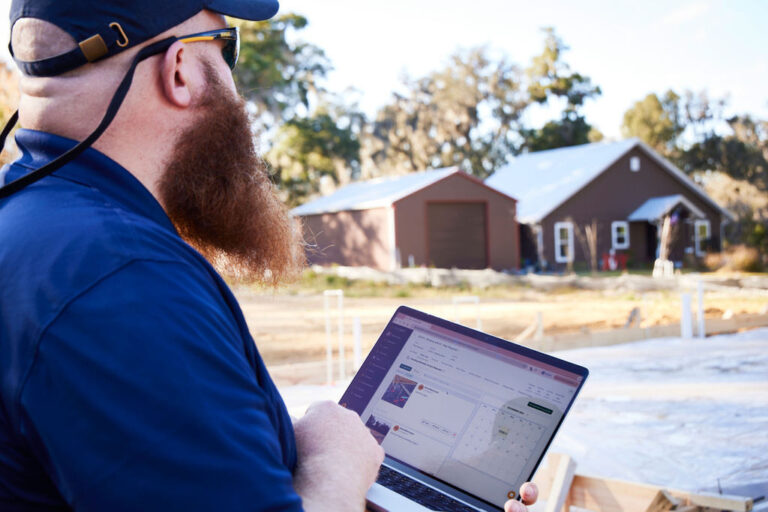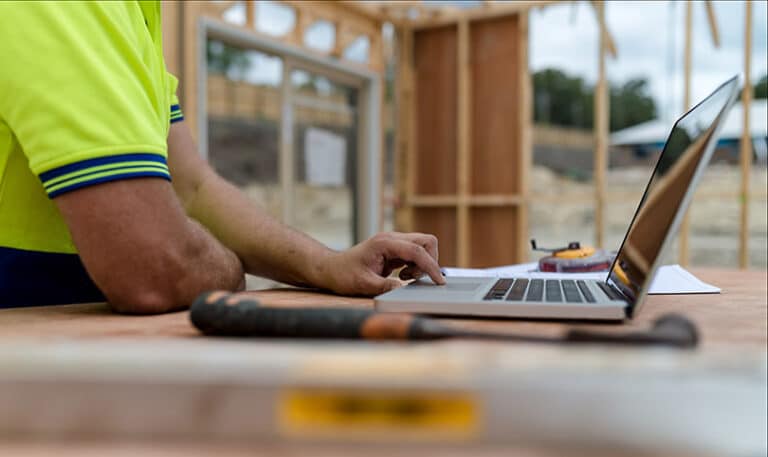Residential construction is a leading sector in the U.S.’s economic recovery following the impact of the COVID-19 pandemic. While the pandemic halted or changed the way most industries do business, the construction industry, for most of the nation, was and still is considered essential. Construction projects were mostly able to continue.
The construction industry today is facing many challenges. We have outlined the top five challenges to watch now to help you prepare your construction company for success in the short and long term and complete construction projects on time. If we learned anything about this year is that change is inevitable. How your business adapts to change and the challenges in the construction industry can have a real impact on construction companies everywhere.
1. Navigating the lack of skilled labor and labor shortages
Since the housing market crash and subsequent great recession, the construction industry faces a lack of skilled labor in the workforce. Many skilled laborers lost their job or transitioned out of the sector through job training programs leaving the industry with a skilled labor challenge.
The average age of the current skilled worker is 50 years old, and this is the second or third time they have experienced a bout of joblessness. Besides, the Coronavirus Aid, Relief, and Economic Security Act (CARES Act) means many workers get more compensation through unemployment benefits ($600 more, on top of each state’s unemployment compensation), making returning to the job site less attractive at this time.
The lack of skilled labor and labor shortages will need to be sorted by doing more with less. Instead of bringing on employees that increase overhead costs, hire contractors with specific skills. Now is also the time to bring on new technology to streamline processes and increase productivity.
Construction professionals need to get creative with existing construction methods to tackle the rising cost of materials and the lack of skilled workers. All of these challenges make it difficult to complete construction projects on time to make a profit.
2. The increased risk of COVID-19 on a crowded job site
As well as the standard construction safety protocols, the Occupational Safety and Health Administration (OSHA) has also published guidance and recommendations for construction site safety and health standards. Still, there isn’t a formal COVID-19 construction industry outbreak tracker. The lack of a national tracking system in place for construction-related COVID-19 outbreaks means many go unreported. It is important to have strong safety programs in place to make sure small businesses are negatively impacted further by the pandemic. While some state and municipal governments have measures in place, it’s on each company to implement measures to protect employees.
Once there is an outbreak on the job site, it runs the risk of a shutdown in an effort to keep workers safe. This can delay a construction project and lead to losses on the job. Other industries have the opportunity to work remotely, and in most cases, that’s not an option for job site construction work. Project managers, general contractors and others, have to be at the construction site.
While the construction industry’s challenges include consistent workplace safety policies, now is the best time to adopt new technology enabling a safer workplace and ongoing and timely communication. New technologies will help your team work smarter and faster. Inadequate planning in the implementation can lead to headaches.
While younger workers might pick it up quickly, others might not. Ensure everyone is adequately trained on new tools and procedures. Leadership should provide the proper training to make sure the team is completing projects on time.
Now, more than ever, it’s important for the construction industry to monitor emerging technologies that can help boost productivity and profits. Technology adoption is vital to continued success and to navigate new challenges that may arise.
Empower your employees and contractors to stay on the job and help each other by developing a simple safety program. Offer incentives for following and staying safe on construction sites. For example, after 60 days free of health or safety issues, bring in a food truck for lunch or an extra paid vacation day.
Given the labor statistics, it is important to keep employees safe and happy a the same time. While it might be hard to offer many benefits, showing employees you appreciate them by bringing in a food truck or offering another vacation day can help construction workers feel appreciated, especially the younger generation.
3. Managing unstable material costs and rocky supply chain
The pandemic caused shutdowns in lumber mills this past spring during the rise in DIY remodeling and the booming housing market. As a result, lumber prices skyrocketed once they reopened, causing prices to rise on other building product materials.
As lumber prices continue to increase, dealers are stocking up. The supply chain can cause people in the construction industry many headaches, so it’s important to always be prepared. Finding the required construction materials has been a challenge.
Yet, as lockdowns across the northern hemisphere due to the lingering pandemic and demand for commodities decrease, we will likely see pressure for lowering prices. Supply chains should start to see some relief as things start shifting back to normal.
Still, this has caused many to think of ways to avoid a similar supply chain headache in the future that causes material costs to increase. Many hope emerging technologies can provide a solution.
4. Add technology to gain a competitive edge
One of the biggest challenges facing the construction industry has been the slow adoption of technology. But this is changing. Customers are tech-savvy, and there’s no better time to bring on new technology while social distancing on job sites, communicating with customers more often, and navigating what’s next.
While the pandemic has fast-tracked the industry forward and accelerated technology adoption, knowing what technology solution to choose can be daunting for the small builder, remodeler, and contractor, there are many solutions to choose from, and some are more powerful than others.
Technology that fits your business and is quick to learn allows you to control how you propel your business forward. The things you’re doing day in and day out that take up most of your time are the same things you should be doing on a software platform, like estimating jobs and managing subcontractor quotes.
5. Make the money you deserve
Cash is king and keeping an eye on your cash flow is critical. One of the construction industry issues is that builders are not proactive in their cash flow management. It’s essential to understand a few key points to make a profit: what is the breakeven point, what are the fixed costs, and how much is left over.
Margins are getting smaller, and the opportunity to build and maintain relationships with customers is becoming more challenging. Relying on video conferencing instead of meeting face-to-face makes it harder to make a deal in the construction business.
It’s vital to stay disciplined with bids and not bid work too low, especially considering increased costs of certain materials and difficulty finding labor. Check out Leslie Shiner’s A Simple Guide to Turning a Profit as a Contractor for support to get you on your way to making the money you deserve. Leslie is a well-known financial consultant for the building industry and is a partner in The Shiner Group.
The right project management software can set you up for success
The hardest part of being a successful builder and business owner is not the craft of building. It’s the day-to-day running and growing your business. The issues facing the construction industry affect large and small companies alike, but identifying the challenges ahead and how to navigate them will be key to your success:
- Hire contractors with specific skills
- Streamline your processes and increase productivity
- Empower your employees and contractors with safety standards
- Add technology to gain the upper hand and boost productivity levels
- Manage your cash and make the money you deserve moving forward
Knowing what’s on the horizon can help you manage the problems you meet with your construction project management and successfully navigate the challenging times.


















